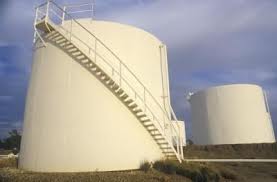Spill Prevention Control & Countermeasures Plan Requirements
In the last post I briefly reviewed the Spill Prevention Control and Countermeasures  (SPCC) requirements. Today’s post will focus on the information that must be included in an SPCC Plan. The following requirements are summarized from the General Requirements for Spill Prevention, Control, and Countermeasure Plans found in 40 CFR 112.7.
(SPCC) requirements. Today’s post will focus on the information that must be included in an SPCC Plan. The following requirements are summarized from the General Requirements for Spill Prevention, Control, and Countermeasure Plans found in 40 CFR 112.7.
- Physical layout of the facility including location of:
- Each fixed oil storage containers.
- Mobile or portable storage areas.
- Exempt underground tanks (marked as “exempt” in the layout).
- Transfer stations and connecting pipes (also include exempted lines).
- The type of oil and storage capacity for each fixed and mobile container.
- Discharge prevention measures including procedures for routine handling of products (loading, unloading, and facility transfers, etc.).
- Discharge or drainage controls such as secondary containment around containers and other structures, equipment, and procedures for the control of a discharge.
- Countermeasures for discharge discovery, response, and cleanup—including onsite capability and those that might be required of a contractor.
- Methods of disposal of recovered materials.
- Contact list and phone numbers for the facility response coordinator, National Response Center (NRC), cleanup contractors, and all regulatory agencies who must be contacted in case of a discharge.
- Discharge event response procedures—this includes procedures that will provide ease of reporting information pertinent to the spill (i.e. type of material, location information, time and date, etc).
- Explanations for the omission of control measures listed in 40 CFR 112.7(c) or 112.7(h).
- Inspection and integrity test procedures for the oil containing equipment.
- Annual personnel training and discharge prevention briefing requirements and procedures.
- Security procedures for oil containing equipment and processes.
- Information on how facility complies with the applicable requirements and other effective discharge prevention and containment procedures or any applicable more stringent State rules, regulations, and guidelines.
Keep in mind this list is extracted form the general federal requirements, additional requirements are found in 40 CFR 112 (i.e. Subpart B and Subpart C) and as always consider the state and local requirements of the facility.
A great starting place for plan creation is the templates provided for Tier I Qualified Facilities. Even if your facility is Tier II or requires a Professional Engineer (PE) Certification you can reduce costs by drafting the plan and having the PE visit the facility, review and certify the plan. Need more resources? Check out the EPA’s SPCC Homepage.
Have questions about creating an SPCC Plan? Leave a comment below or send me an email at info at ehscsi.com.
